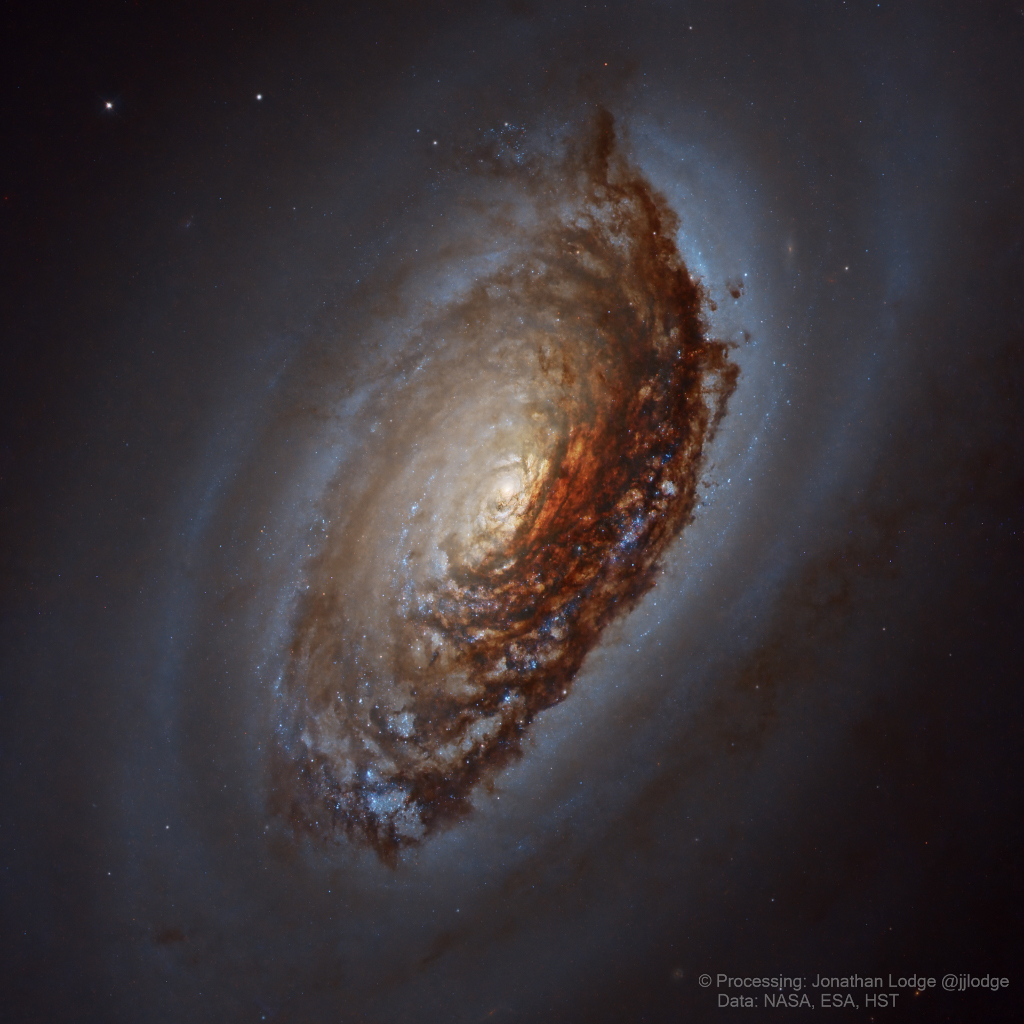2023年7月20日
M64: The Black Eye Galaxy Close Up
Image Credit: NASA, ESA, Hubble, HLA; Processing: Jonathan Lodge
Explanation: This magnificent spiral galaxy is Messier 64, often called the Black Eye Galaxy or the Sleeping Beauty Galaxy for its dark-lidded appearance in telescopic views. The spiral’s central region, about 7,400 light-years across, is pictured in this reprocessed image from the Hubble Space Telescope. M64 lies some 17 million light-years distant in the otherwise well-groomed northern constellation Coma Berenices. The enormous dust clouds partially obscuring M64’s central region are laced with young, blue star clusters and the reddish glow of hydrogen associated with star forming regions. But imposing clouds of dust are not this galaxy’s only peculiar feature. Observations show that M64 is actually composed of two concentric, counter-rotating systems. While all the stars in M64 rotate in the same direction as the interstellar gas in the galaxy’s central region, gas in the outer regions, extending to about 40,000 light-years, rotates in the opposite direction. The dusty eye and bizarre rotation are likely the result of a billion year old merger of two different galaxies.
Tomorrow’s picture: pixels in space
M64:黑眼星系特写
影像提供: NASA, ESA, Hubble, HLA; 影像处理: Jonathan Lodge
说明: 这个壮丽的螺旋星系是梅西耶64 (M64);因它在望远镜中的粗黑眼脸外观,也常有黑眼星系或睡美人星系之称。而这幅重新处理的哈勃望远镜影像,则呈现这个旋螺星系中心约7,400光年的区域。 M64位在北天的后发座内,离我们约1千7百万光年远。在遮掩部分M64中心区的庞大尘埃云上,散布着许多泛蓝年轻恒星及隶属于恒星诞生区、散发特征泛红辉光的氢气。不过,推有庞大的尘埃云并不是这个星系的唯一怪异之处,观测指出M64其实是由两圈共心、绕行方向相反的恒星系统所组成。虽然M64之内所有的恒星,都和核心的星际云气同向绕行,但是外围延伸至约40,000光年远处的云气,却反向运行。由尘埃所构成的”黑眼圈”及怪异的旋转运动,可能是两个不同星系在10亿年前合并所致。
明日的图片: pixels in space



